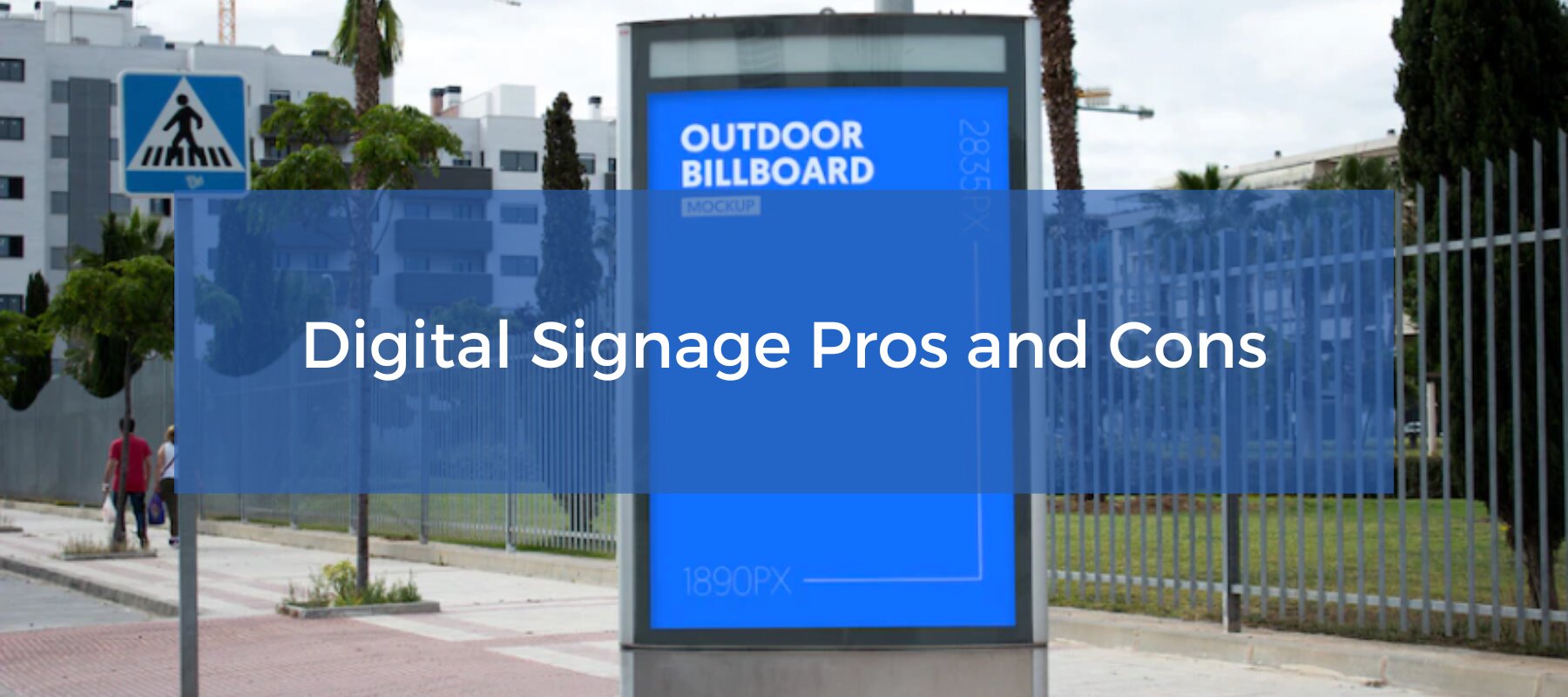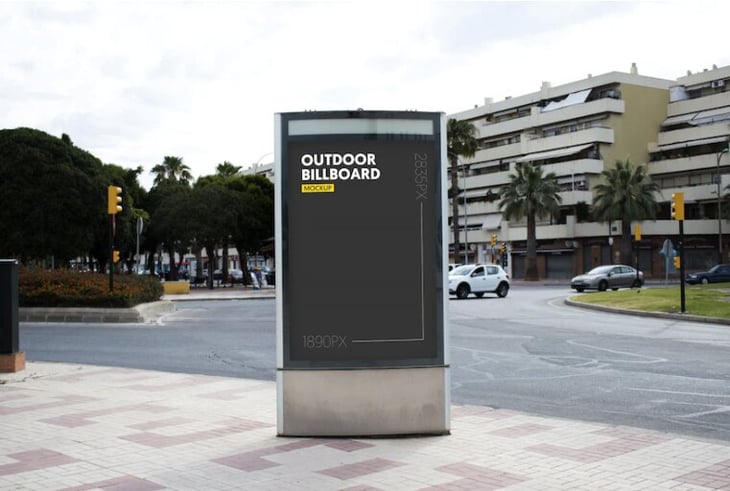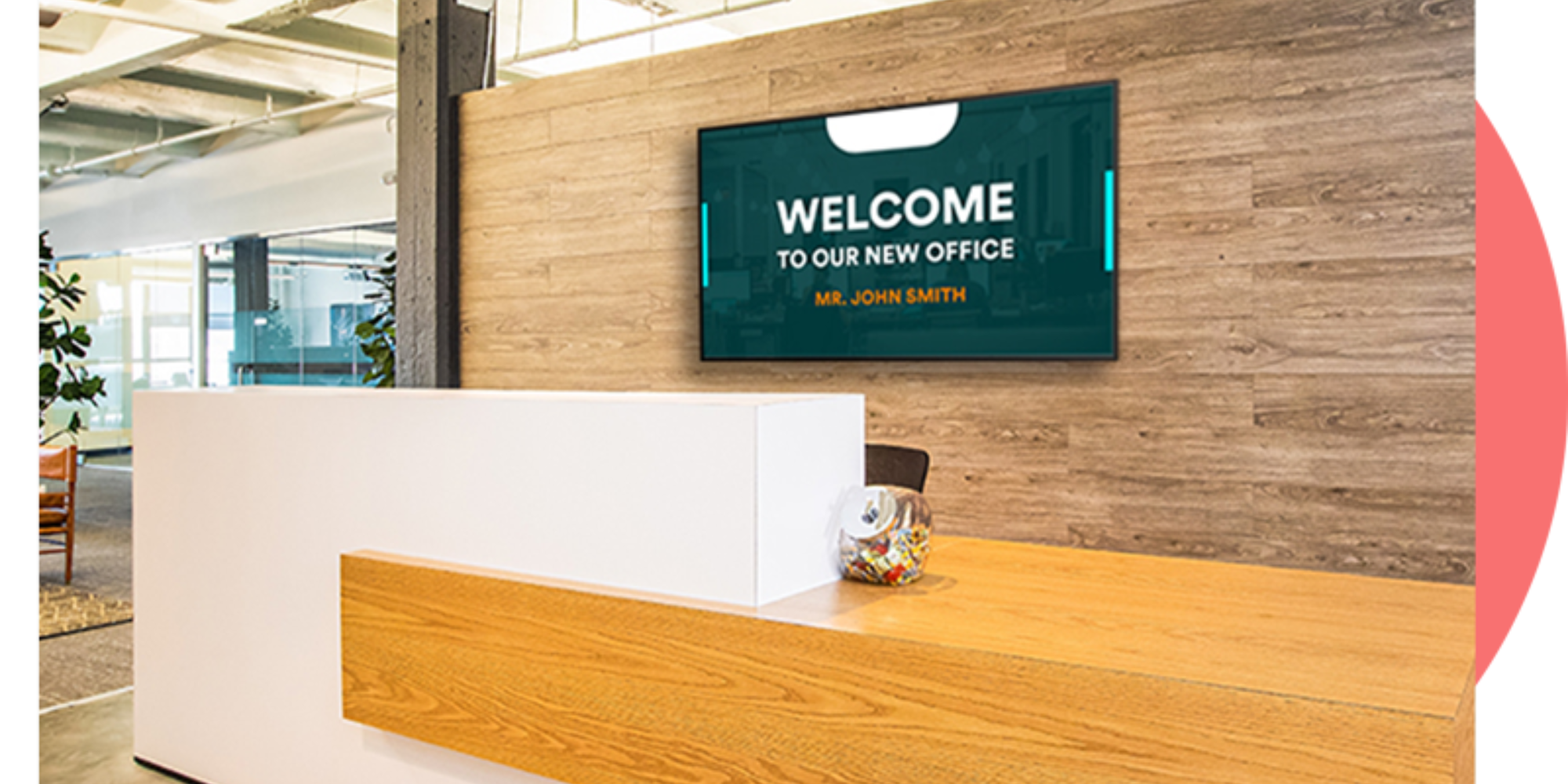
Pros and Cons of Digital Signage
Digital signage is a powerful marketing tool that businesses across industries are utilizing to their full advantage to improve customer experiences and generate higher revenue. But as a modern, technological solution, digital signs will also come with their own intricacies that may be challenging for first-time users to navigate.
If you are looking into adopting digital signage for your business, you must first weigh its pros and cons in order to make an informed decision.
Pros of Digital Signage
Digital signage is becoming to go-to marketing medium for businesses because of the following advantages:
Attention-Grabbing

Digital signs feature dynamic visuals, vibrant colors, and moving elements that you typically cannot see in traditional signs like posters or flyers. Because of this, they are hard to ignore and can catch the viewer’s attention in seconds.
With the human brain able to process and recall visual information faster than text, presenting information visually through digital signs can be powerful for customer engagement.
Content Quality
Static signs can get stale very quickly. But digital signage always provides an immersive and impressive display that people can’t help but look at.
This consistent content quality allows for the successful presentation of information and announcements, or advertisements of new products, services, and campaigns.
Cost-Savings
Digital signage has a reputation for being expensive, but if you look at that cost in full and compare it to how much you’ll spend for traditional signage in the long run, you’ll find that the latter takes up more of your resources.
With traditional signage, you have to redesign, reprint, and redistribute new collaterals for every product you’re promoting or campaign you’re running. In comparison, digital signage does not require all this extra work to update content; you’ll be saving crucial time and money.
Easy Updates
Digital signs can be updated in real time, and all it takes is making changes in your content management system. You can update digital signage content to present new products or offers, or make improvements to maximize engagement.
You can even schedule content to come out at different times of the day or create playlists to show different types of promotions or media.
Flexible

Digital signage technology has become very advanced, allowing you to tailor your signage content to your customers. For example, you can program your digital sign to deliver specific content based on customer demographics or location. That way, you are supplying them with information that will motivate their purchasing decisions.
Digital signs can also be programmed to deliver content that changes with the time of day or season, ensuring that your sign is always relevant and targeted.
Immersive Experiences
In line with digital signage being more attractive and attention-grabbing than traditional mediums, viewers will spend more time perusing a digital sign than a poster or flyer. With all the interactive elements that keep them engaged, they are much more likely to stick around and watch until the end — which in turn ensures that they get your main call to action.
Integration of Management Tools
Digital signage can be integrated with powerful software, such as a manufacturing dashboard, to maximize its features."
From cloud-based management software that allows you to access digital signs from different locations to content management tools that let you change and update content in real time, you have a huge range of software that can help you keep your digital signs effective.
Cons of Digital Signage
While digital signage has a plethora of benefits for your business, it does come with drawbacks that you need to be aware of.
Initial Cost

Digital signage is significantly more cost-effective than traditional signage if you consider the long-term costs associated with the latter. But an issue is the upfront expense.
The initial installation cost of digital signage can be rather huge, requiring you to shell out money for the LCD or OLED screen, internet, software, and not to mention any potential repairs and maintenance.
It’s worth it to note, however, that digital signage is more sustainable than traditional signage. And with its ability to boost your revenue, you’ll get significantly better ROI.
Required Expertise
Digital signage is a modern technological solution, which means that it will also come with its own set of technical intricacies. While most software is made to be as user-friendly as possible, you’ll need some sort of technical know-how to manage all the tools and updates.
Is Digital Signage Worth It?
Overall, the pros of digital signage far outweigh its cons, which makes it worth investing in. Try our free digital signage solution and see for yourself. While it may cost a lot upfront and require technical expertise to operate, these are very minor drawbacks when compared to the wonders that digital signage can do for your business.
From improved customer experiences and engagement to long-term cost-savings and increased revenue, it’s a smart move to invest in digital signage solutions to up your marketing game.
More From Our Blog
-

How Effective is Digital Signage?
Digital signs are revolutionizing. That's the short answer. But if you're trying to convince leadership to invest in screens for your school hallways, hospital waiting areas, or manufacturing floor,[…]
Read More -

10+ Office Welcome Sign Ideas
Getting a welcome sign on your office display shouldn't take all afternoon. Rise Vision makes it pretty straightforward: pick a template, swap in your logo, and push it to your screen. Done. The[…]
Read More -

Top Trends in Digital Signage Display Technology for 2025
Digital signage technology is evolving rapidly, with new innovations emerging every year. In this rapidly evolving landscape, businesses must adapt quickly to keep up with the latest advancements in[…]
Read More
Keep Your Displays Interesting – Pick New Templates Every Week!
Every week, we send template recommendations that will make you look great and improve your audience experience. And the best part, they save up to 16 hours of content creation time every week!
12,300+ Organizations Trust Rise Vision, You Can Too
Schedule a Free Demo
You deserve the #1 all-in-one platform for digital signage, screen sharing, and emergency alerts.



































